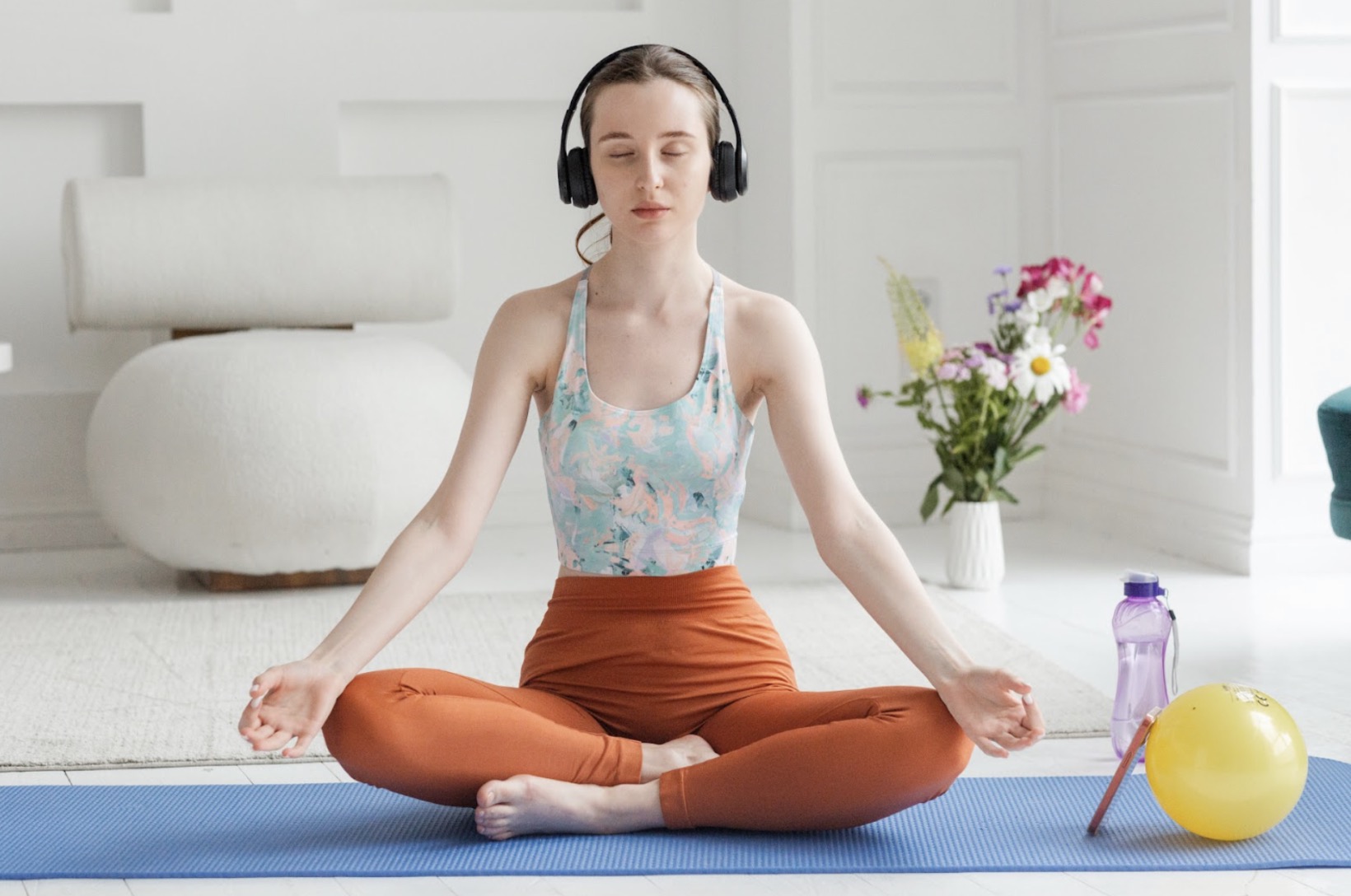Guided Meditation: A Path to Inner Calm and Clarity

What Is Guided Meditation?
Guided meditation is a practice where a teacher, audio track, or app leads you through a meditation session with spoken instructions. Instead of sitting in silence and wondering what to do, you’re gently guided step by step—into breathing awareness, visualization, or body relaxation.
For beginners, guided meditation makes the practice accessible and less intimidating. For experienced practitioners, it provides new perspectives and deeper focus.
Historical and Cultural Background

Guided meditation is not a modern invention. In Buddhist and Zen traditions, meditation has often been transmitted orally, with a teacher guiding students through chanting, visualization, or breath awareness. At Kōyasan, for example, monks have long used the rhythm of voice—through sutra recitations or ritual instructions—to steady the mind and open the path of practice. Words and sound served as anchors for disciples navigating inner turbulence, much like guided meditation does today. What we now call “guided meditation” is essentially a continuation of this lineage of vocal transmission, updated for the digital age. Listening to a monk or teacher’s voice through a smartphone is, in a sense, the same as disciples centuries ago leaning into their teacher’s spoken guidance in a temple hall.
Benefits of Guided Meditation
- Stress relief: Calms the nervous system and reduces anxiety.
- Better focus: Helps you anchor attention and reduce distraction.
- Emotional balance: Encourages self-awareness and compassion.
- Improved sleep: Many people use guided meditation before bed to fall asleep faster.
- Accessible anytime: Apps and recordings allow you to practice at home, on a commute, or even during a work break.
What Science Says About Guided Meditation
Modern science has reinforced what tradition has known for centuries: guided meditation profoundly benefits both body and mind. Studies from Stanford and Harvard have shown that even short sessions, when practiced consistently, reduce stress hormones and improve sleep quality. One trial found that participants who practiced just 10 minutes of guided meditation daily for eight weeks reported a 30% reduction in anxiety and a 20% improvement in focus. Neuroimaging studies also reveal that guided meditation decreases activity in the amygdala—the brain’s fear center—while strengthening the prefrontal cortex, which governs attention and emotional regulation. In other words, guided meditation combines ancient wisdom with modern science, offering a practice that is both spiritually grounded and empirically validated.
Guided Meditation in Daily Life
Unlike traditional meditation retreats, guided meditation fits into ordinary routines. You can start with just 5–10 minutes a day. Over time, the sessions become a pause button for your mind, a place to breathe before returning to the noise of life.
Many users of the Gassho app describe guided meditation as a quiet companion. One user shared: “It feels like the atmosphere of Japanese Buddhism and temples has been transported directly into my smartphone—a truly unique sensation. Just listening helps me quiet my mind and naturally turn inward. I discovered this app during a particularly stressful period at work, but thanks to it I was able to rediscover a sense of stillness in my daily life.”
Popular Styles of Guided Meditation
- Breath Awareness: Focusing on inhale and exhale.
- Body Scan: Relaxing each part of the body.
- Visualization: Imagining calming scenes or healing light.
- Mindfulness: Observing thoughts without judgment.
- Loving-Kindness (Metta): Cultivating compassion for self and others.
How to Start Your Guided Meditation Practice

- Choose a quiet space where you won’t be interrupted.
- Pick a session length that feels manageable (5–20 minutes).
- Use headphones for immersive audio.
- Experiment with different teachers and styles until one resonates.
- Be patient—benefits grow with consistency.
Final Thoughts
Guided meditation is not just a practice—it’s a gentle guide walking beside you, helping you return to yourself. Whether you’re seeking stress relief, better sleep, or deeper self-awareness, guided meditation offers an accessible and reliable path to inner peace.
Frequently Asked Questions
FAQ 1: How long should a guided meditation session be?
Answer: Most beginners benefit from 5–10 minutes daily. This length is enough to calm the mind without being overwhelming, and with practice sessions can extend to 20–30 minutes.
Real Results: A 2023 study found participants who meditated 10 minutes daily for 8 weeks reduced stress levels by 30%.
Takeaway: Start small with 5 minutes a day and grow from there.
FAQ 2: Do I need prior meditation experience?
Answer: No, guided meditation is designed for beginners, with the teacher’s voice leading step by step.
Real Results: Gassho users reported that guided sessions helped them establish a daily habit when silent meditation felt too difficult.
Takeaway: Anyone can begin guided meditation without prior training.
FAQ 3: Can guided meditation help me sleep better?
Answer: Yes, guided meditation is highly effective for improving sleep by focusing on relaxation and letting go of thoughts.
Real Results: Clinical trials showed participants added an average of 42 minutes of sleep per night after guided sessions.
Takeaway: Use guided meditation as part of your bedtime ritual for deeper rest.
FAQ 4: What equipment do I need?
Answer: All you need is a phone, headphones, and a quiet space. A cushion or blanket can add comfort but is not required.
Real Results: Thousands of app users practice from bed, during commutes, or while traveling, making it one of the most portable wellness practices.
Takeaway: Guided meditation requires almost no setup—just your device and intention.
FAQ 5: Is guided meditation the same as mindfulness?
Answer: Not exactly—guided meditation is a method, while mindfulness is the skill it develops. A teacher uses guidance to cultivate awareness and focus.
Real Results: Consistent guided meditation improves attention span, reduces emotional reactivity, and strengthens mindfulness skills.
Takeaway: Guided meditation is one of the easiest ways to learn mindfulness.
FAQ 6: Can guided meditation reduce anxiety and stress?
Answer: Yes, guided meditation lowers stress by calming the nervous system through breathing, body scan, and visualization techniques.
Real Results: Research shows a 38% reduction in anxiety symptoms after 6 weeks of guided mindfulness practice.
Takeaway: Guided meditation is a proven tool to manage stress and anxiety naturally.
FAQ 7: How often should I practice guided meditation?
Answer: Daily practice yields the strongest benefits, and even short, consistent sessions are more effective than occasional long ones.
Real Results: Users who practiced at least 4 days a week reported 2× higher improvements in focus compared to those meditating once a week.
Takeaway: Aim for daily practice—even 5 minutes counts.
FAQ 8: Can children or teens practice guided meditation?
Answer: Yes, guided meditation is safe and beneficial for all ages, with special sessions for children using simple imagery and calm narration.
Real Results: A school-based study showed students practicing 10-minute guided sessions improved concentration and reduced behavioral issues.
Takeaway: Guided meditation supports mental health for both adults and children.
FAQ 9: What types of guided meditation exist?
Answer: Common types include breath awareness, body scan, visualization, loving-kindness, and sleep meditations, each targeting different needs.
Real Results: Users who experimented with 3 or more types found it easier to stay consistent long-term by choosing sessions based on mood.
Takeaway: Try different guided meditation styles to find what resonates with you.
FAQ 10: Does guided meditation work better with an app or a live teacher?
Answer: Both are effective—apps offer flexibility, while teachers provide personal feedback, and many people combine both approaches.
Real Results: Majority of Gassho users preferred app-based guided meditation for convenience, while others valued in-person classes for accountability.
Takeaway: Choose the format—app or teacher—that best supports your lifestyle.
FAQ 11: What kind of guided meditations does Gassho offer?
Answer: Gassho offers guided meditations rooted in traditional Buddhist practice, developed in collaboration with monks from Kōyasan’s Kongō Sanmai-in Temple. These sessions ensure spiritual authenticity while remaining practical for modern use.
Real Results: Many users reported that the structured, step-by-step sessions made meditation more approachable and sustainable.
Takeaway: Gassho provides guided meditations rooted in tradition, designed for modern life.
Related Articles
-
University of California, Davis Study on Meditation and Stress
Focused attention practices enhance “present-moment awareness” and contribute to lowering cortisol levels -
BMJ Open (2022)
Mindfulness meditation shown effective in improving insomnia and sleep disorders -
“Meditation Near Me” — Finding Stillness Right Where I Am
What Is Mindfulness Meditation? An Easy Guide for Beginners -
Yoga and Meditation: A Path to Relaxation, Focus, and Inner Peace
The Benefits of Yoga Meditation|How It Reduces Stress and Improves Focus
